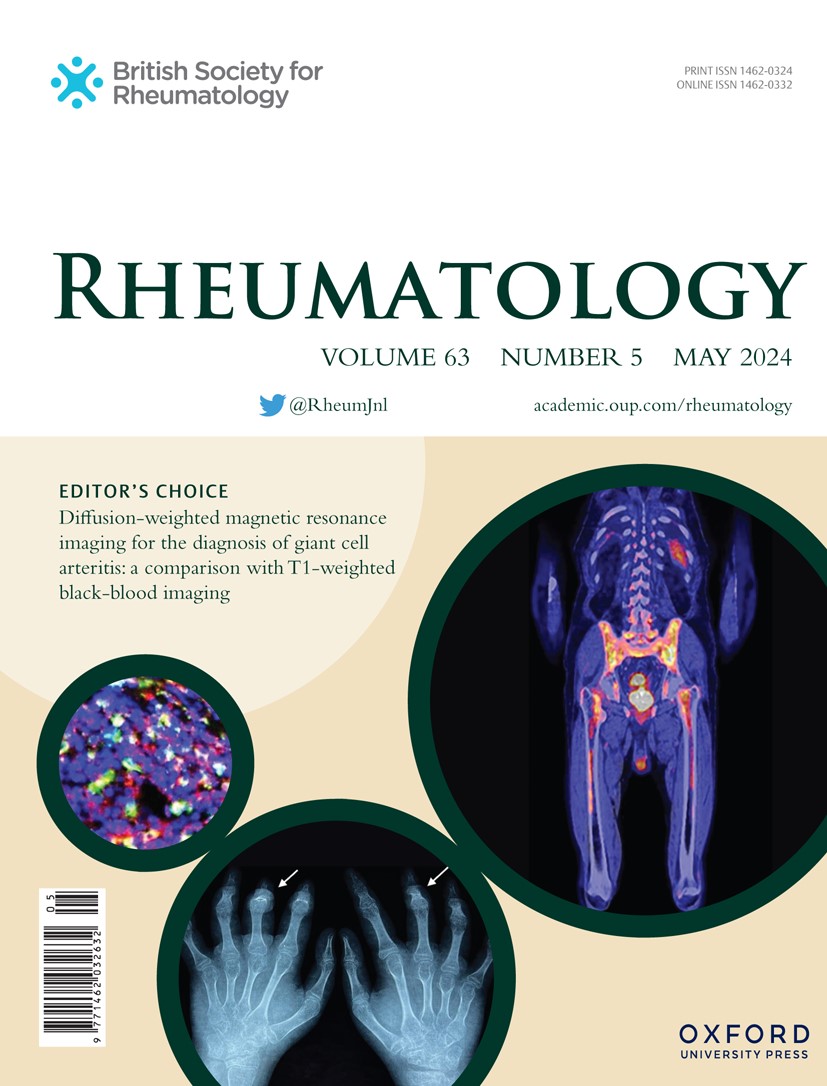SIRT3通过H3K18去乙酰化抑制类风湿关节炎中成纤维细胞样滑膜细胞的激活
IF 4.4
2区 医学
Q1 RHEUMATOLOGY
引用次数: 0
摘要
代谢重编程和表观遗传修饰是类风湿关节炎(RA)发展的关键因素。最近的研究已经确定乳酸依赖性组蛋白修饰是一种新的表观遗传机制,将糖酵解与基因调控联系起来。然而,组蛋白乳酸化在RA发病机制中的确切作用尚不清楚。我们旨在阐明组蛋白乳酸化,特别是H3K18la在RA发病中的具体机制,并探索sirt3介导的去乙酰化过程的治疗潜力。方法采用Western blot和免疫组织化学检测RA患者滑膜组织H3K18la水平。采用胶原诱导关节炎(CIA)模型联合成纤维细胞样滑膜细胞(FLS)研究H3K18la的作用。CUT&;Tag和RNA-seq鉴定了由H3K18la驱动的通路。使用si-SIRT3和SIRT3激动剂檀香醇在FLS中验证SIRT3的功能。研究人员评估了RA患者外周血单个核细胞(PBMCs)中SIRT3的表达,并通过巨噬细胞- fls共培养实验评估了SIRT3的敲除效果。结果RA患者滑膜组织乳酸化,尤其是H3K18la显著升高。降低H3K18la可减轻CIA模型相关症状,减轻TNF-α对FLS的致病作用,而升高H3K18la可加重TNF-α诱导的病理。H3K18la和乳酸盐共同调节的途径包括趋化因子信号和瞬态受体电位通道的炎症介质。此外,H3K18la的关键调节因子SIRT3在RA患者的pbmc中下调。SIRT3的降低增加了FLS和巨噬细胞中的H3K18la,从而激活了FLS。结论SIRT3通过使H3K18失活抑制RA进展。这些发现可能为类风湿关节炎的新型乳酸化靶向治疗铺平道路。本文章由计算机程序翻译,如有差异,请以英文原文为准。
SIRT3 inhibits fibroblast-like synoviocytes activation in rheumatoid arthritis through delactylation of H3K18
Objectives Metabolic reprogramming and epigenetic modifications are key contributors to the development of rheumatoid arthritis (RA). Recent studies have identified lactate-dependent histone modifications as a novel epigenetic mechanism linking glycolysis to gene regulation. However, the precise role of histone lactylation in RA pathogenesis remains unclear. We aimed to elucidate the specific mechanism of histone lactylation, particularly H3K18la, in the pathogenesis of RA and to explore the therapeutic potential of the SIRT3-mediated delactylation process. Methods H3K18la levels in synovial tissue from RA patients were assessed using Western blot and immunohistochemistry. Collagen-induced arthritis (CIA) models combined with fibroblast-like synoviocytes (FLS) were used to explore H3K18la effects. CUT&Tag and RNA-seq identified pathways driven by H3K18la. SIRT3 function was validated using si-SIRT3 and the SIRT3 agonist honokiol in FLS. SIRT3 expression was assessed in peripheral blood mononuclear cells (PBMCs) from RA patients, and macrophage-FLS co-culture experiments evaluated SIRT3 knockdown effects. Results Lactylation, particularly H3K18la, was significantly elevated in the synovial tissue of RA patients. Reducing H3K18la alleviated CIA model-associated symptoms and mitigated TNF-α’s pathogenic effects on FLS, whereas increasing H3K18la exacerbated TNF-α–induced pathology. H3K18la and lactate co-regulated pathways included chemokine signalling and the inflammatory mediator of transient receptor potential channels. Furthermore, SIRT3, a key regulator of H3K18la, was downregulated in PBMCs from RA patients. Reduced SIRT3 increased H3K18la in FLS and macrophages, which activated FLS. Conclusions SIRT3 suppresses RA progression by delactylating H3K18. These findings may pave the way for novel lactylation-targeted therapies in RA.
求助全文
通过发布文献求助,成功后即可免费获取论文全文。
去求助
来源期刊

Rheumatology
医学-风湿病学
CiteScore
9.40
自引率
7.30%
发文量
1091
审稿时长
2 months
期刊介绍:
Rheumatology strives to support research and discovery by publishing the highest quality original scientific papers with a focus on basic, clinical and translational research. The journal’s subject areas cover a wide range of paediatric and adult rheumatological conditions from an international perspective. It is an official journal of the British Society for Rheumatology, published by Oxford University Press.
Rheumatology publishes original articles, reviews, editorials, guidelines, concise reports, meta-analyses, original case reports, clinical vignettes, letters and matters arising from published material. The journal takes pride in serving the global rheumatology community, with a focus on high societal impact in the form of podcasts, videos and extended social media presence, and utilizing metrics such as Altmetric. Keep up to date by following the journal on Twitter @RheumJnl.
 求助内容:
求助内容: 应助结果提醒方式:
应助结果提醒方式:


